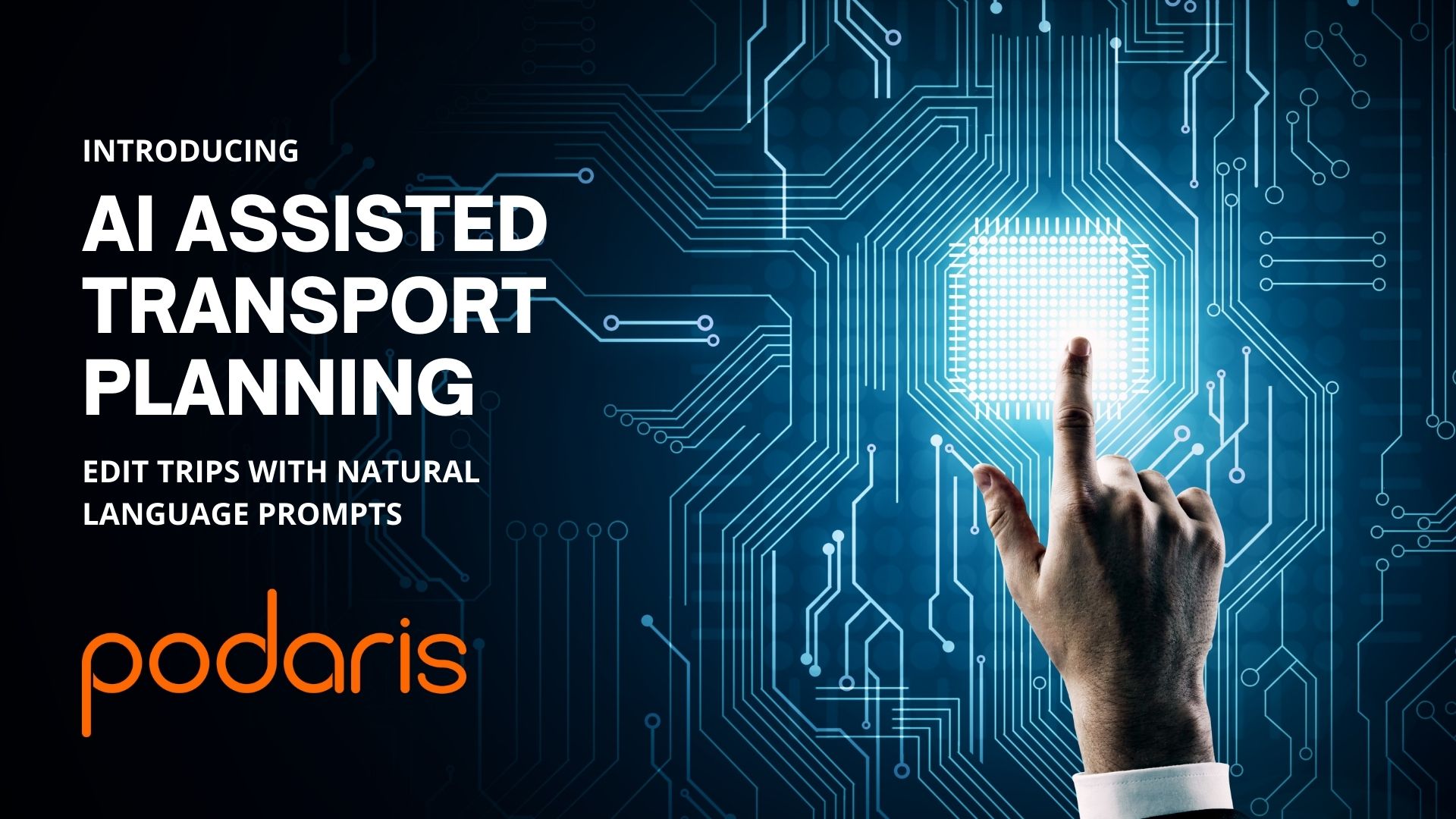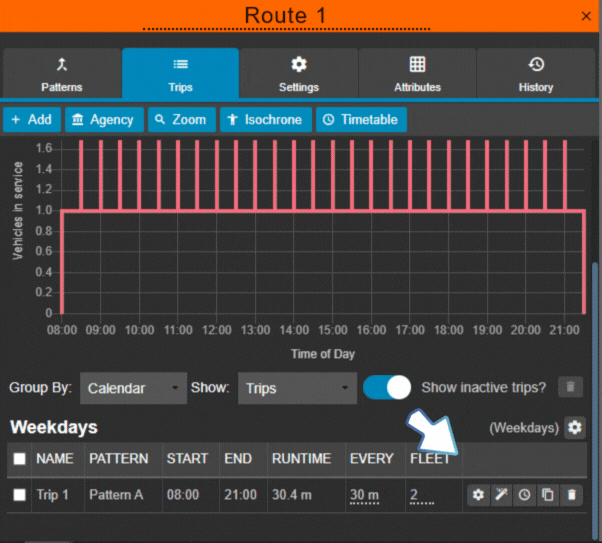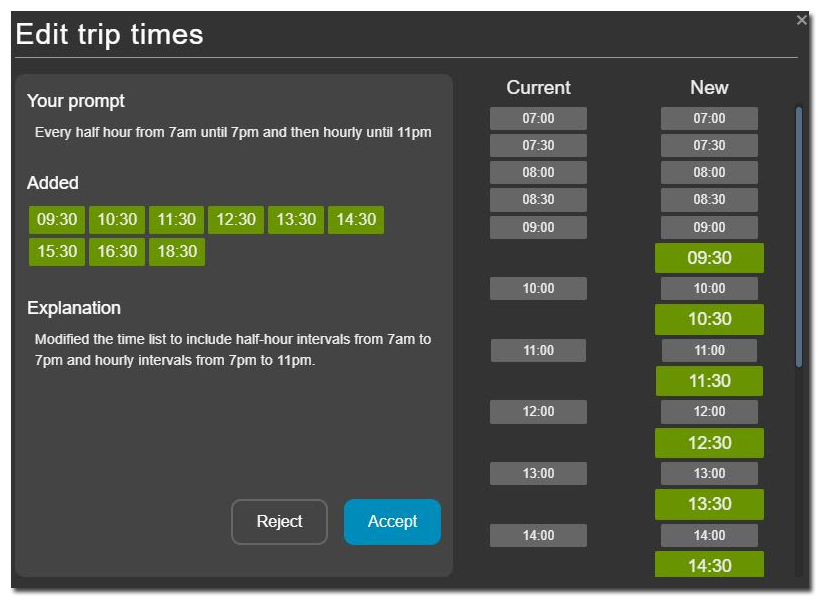
The past few months have seen spectacular advances in the field of artificial intelligence, with an abundance of new tools emerging on an almost daily basis to assist in the generation of everything from video to usable code.
While the newness of these tools means that most of us are still engaging with them as an amusing novelty, developers are now starting to leverage their power to create productivity boosting integrations with existing software.
We're very excited to announce the first such integration into Podaris’ multimodal transport planning and analysis platform: AI assisted service scheduling.
What can it do?
If you commonly work with transit feeds such as GTFS and TransXChange (TXC), you'll understand how laborious scrutinising, editing and creating trip data can be for networks with a large number of services. AI assisted service scheduling offers a natural language interface to your trip time data, allowing you to communicate your desired changes in plain English (or any one of dozens of other languages - even emojis!).
Trips, in Podaris, much like those in the GTFS format, are comprised of a number of features including (but not limited to):
- Patterns (the physical path taken on a route)
- Calendars (the days and dates the trip is active)
- Types (frequency based, fleet size based, or using exact timings)
Choosing the frequency based type, specifying your desired headway, then setting the exact start and end time for your trip will populate an exact timings list in Podaris. Alternatively, you can specify those timings yourself. Once you have done so, simply click the magic wand icon next to your exact trip times to load the AI trip time assistant.
For existing trips, such as those that you've imported as GTFS feeds, you can find the same magic wand icon next to each trip on the trips list (below)

A prompt reply

With the AI assistant panel open, simply describe the changes you'd like made to your trip times, for example:
- Add new trips every half hour from 7am until 7pm, then every hour until 11pm
- Double the morning frequency and remove any trips after 8pm
- Half the number of AM peak trips
Once you've submitted your prompt, the editor will show you which times it has added, removed or left in place, as well as provide you with a text-based description of the changes it has made.
Having accepted these changes, you can further refine your trip times list by submitting additional prompts. Once you are happy with your changes, they can be applied to your trip and used as part of Podaris’ service scheduling solution to assess travel time, accessibility and costs, as well as generating a wide range of other metrics.
We're looking forward to extending Podaris’ AI capabilities in the near future, so let us know if you have any suggestions for how this technology could benefit your transport projects.
AI assisted planning is available to all Podaris enterprise users now. To discover how Podaris can help accelerate your transport planning projects, schedule a demo with us today.